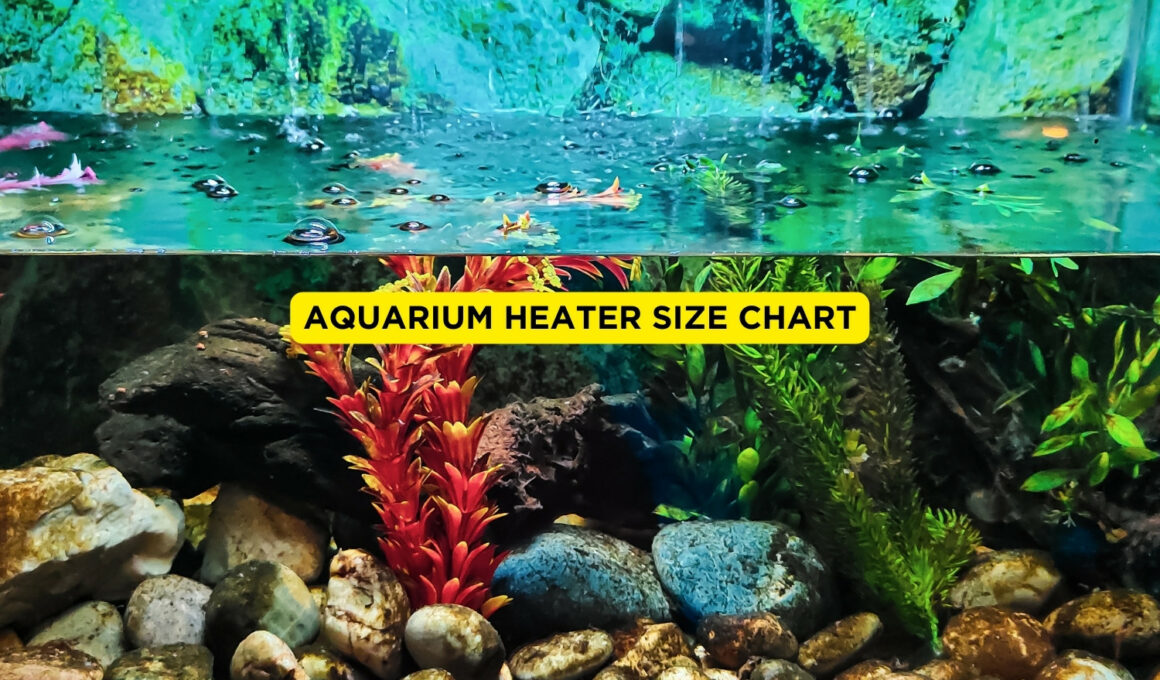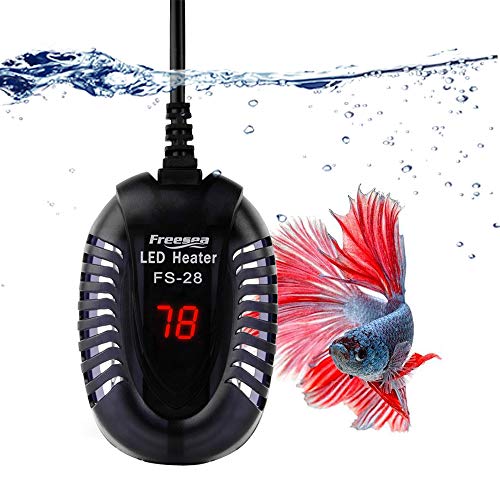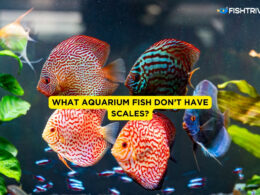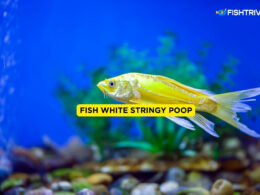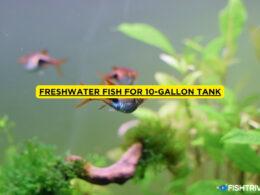In this article Show
Cold-blooded living beings rely on water temperature to maintain their body temperature in their aquariums. This ensures that you need to heat your tank and hold it for your fish at the right temperature.
Depending on your configuration, you can select from a variety of heaters and choose only one or many heaters. The heater capability or heating strength indicates the wattage.
Your aquariums are vital for your fish’s well-being and warmth, as fish don’t make their body heat unlike people and other mammals. The heat must be preserved depending on the temperature of your aquarium water.
That said, you would need to have a suitable size heater to hold your fish tank in the right place for your animals. Much of the fish are cold-blooded, body temperatures depend on local waters, and most freshwater fish are marine, balsamic species at a temperature between 78 and 80 ° F.
So if you’re still better than that in your den, You need to know how much water your tank carries to pick the correct size heater for your fish tank.
If you know the number of gallons in your aquarium, it is a reasonable law that you must generate at least 3 to 5 watts for each gallon of water. We will be elaborating on every important aspect that needs to be described. Let’s get started.
What Size Aquarium Heater Do You Need in a Fish Tank
Some heaters for particular aquarium sizes are sold — 10 gallons, 20 gallons, etc. These heaters can give you a rough guide, but their dimensions are not absolute.
A 10-gallon goldfish tank, for example, does not need a 10-gallon warmer, because goldfish are coldwater fish and may need to lift just one degree or two of temperature. Heaters are usually marketed by wattage. In general, bigger tanks need higher heaters.
How Many Types of Heaters Are There?
According to your choice as well as your fish tank, you need to choose your heater. There are a few choices you will find in the market.
1. Heating Cable
Underneath the gravel or substratum is a heating cord that is attached to a control device. For freshwater aquariums, it can be useful for avoiding dead spots. However, this is not the safest way to utilize saltwater reef networks, since the substrate must be dug if the cable has to be fixed or removed.
2. Hanging Heater
Hang-on heaters install (typically) on the back of the tank with vent cups and/or a hook or other repair mechanism on the tank lip. They are submerged only in part and are usually less effective than other heaters but can provide sufficient heating in smaller tanks. Used in large pools, more than one heater on the opposite sides of the aquarium should be given.
3. Submersible Heater
Tank water is fully immersed in the submersible heaters which are either placed horizontally or vertically at the rear of the tank. They are also horizontally placed next to the substratum. Submersibles are generally more consistent and efficient than hang-on heaters for larger tanks.
What Should the Heater Size Be?
The size of your aquarium heater will depend on the tank size. Nevertheless, remember that while most heaters are for particular sizes of fish tanks, wattage per gallon is more significant.
The effective size of your heater would be calculated among other minor variables by the consistency and reliability of your equipment. For heater wattage, between 2.5 and 5 watts per gallon of the total volume of water in the aquarium is the general rule of thumb.
However, depending on how much temperature you choose to increase, several times more wattage is required. The overall heating power of all the units can add up to the necessary wattages if you are using more than one heater.
| Aquarium Size | 5°C | 10°C | 15°C |
| 50 Litres | 50 Watt | 75 Watt | 75 Watt |
| 100 Litres | 75 Watt | 100 Watt | 200 Watt |
| 150 Litres | 100 Watt | 150 Watt | 300 Watt |
| 200 Litres | 150 Watt | 200 Watt | 2 x 200 Watt |
| 250 Litres | 200 Watt | 250 Watt | 2 x 250 Watt |
| 300 Litres | 250 Watt | 300 Watt | 2 x 300 Watt |
Where To Place The Heater
There are several different types of aquarium heaters, but we will speak regarding the most common kind-the fully submerged submersible heaters. The water current tends to extend the heat from the heater to the rest of the tank.
The heater should also preferably be located right next to the filter or pump for optimum flow. Place a thermometer on the other side of the tank in one corner opposite the heater.
Generally, consider putting thermometers by the heater and guarantee that the measurements do not surpass the actual temperature of the tank. Often, should not bring them near a radiator or cooling unit or direct sunlight.
Some heaters must often be vertically placed while others are horizontally placed. To achieve the optimal heat transfer we propose installing the heater at a 45 ° angle. By positioning plants and decorating them before them or burying them in the bog if you have one you can cover the heater.
Does Heater Need To Be On All the Time?
The heater is eligible for running 24/7. Aquarian heaters have an internal thermostat that disables the heat at a particular temperature and thus holds the temperature of the water within a few degrees of the desired environment.
When the heater is first mounted, let the machine hold to the temperature of the aquarium water for 20-30 minutes until it is plugged into to avoid temperature shock breakage. Furthermore, when turned on, the radiator must still be submerged in water.
Fortunately, heaters need no maintenance unless you want a toothbrush to clean algae gently. However, if the heater has to be disconnected for whatever reason, the vendors warn you to cool it down before handling at least 30 minutes.
Often you see a heater line that marks the minimum volume of water. If not, the water temperature can not be read accurately and the heating can not be managed properly.
If you keep the heater going, it can flame out or break while you are exposed to dry air, so that you don’t neglect to reconnect it or switch off the power line while the temperature shifts.
Temperature for Saltwater and Planted Aquarium
Saltwater aquariums’ optimal temperature is between 72 and 78 degrees Fahrenheit for tropical fish. For most saltwater fish, the temperature would be 75 degrees Fahrenheit maximum.
A planted tank must often be held at Fahrenheit 72 to 84 degrees. This is mostly because Java Fern and Anuvias are tropical with the most common aquatic plant species.
Otherwise, you’ll have to hold plants like Hornwort that can withstand colder water temperatures if you are to maintain a hotter tank.
Although some interesting saltwater fish species are found, they are not so common in the hobby. When maintaining fish that can withstand colder temperatures, be conscious that the lower temperature can restrict your ability to conserve corals and other invertebrates.
Important Tips about Aquarium Heaters
When considering the use of aquarium heaters, these are the important things to take note of;
1. Multiple Heaters
Two heaters could be needed if the room temperature is considerably below the ideal water temperature. To ensure even heating, heaters can be mounted at the other ends of the aquarium.
2. Heater Height
Since heat increases, the heater tube length is important. The heater tube should usually fit your aquarium height.
3. Unplugging
Often reconnect the heater as you remove the tank so that the heater is not overheated as it is no longer underwater.
4. Heater Settings
Some heaters have precise thermostat regulation numbers so that you can change them to the ideal temperature. Some heaters have controls from low to high, without determining temperatures. The former is easier to use, but check to ensure that the heater is maintained at the right temperature.
5. Use A Thermometer
To check that the heater holds aquarium water at the right temperature use an aquarium thermometer. Shift the thermometer in many positions in the tank to verify the temperature, so that the water temperature is constant.
Conclusion
Pet owners, doesn’t matter which pet, always get attached to it. And they always try to get them as much comfort as they need. If you are reading this, then you have thought of, giving your loved fishes the desired comfort they deserve.
As they are cold-blooded, they don’t have the ability to gain their temperature on their own. So, a heater is very much of a help for them. It will also help them to en-long their lifespan.






